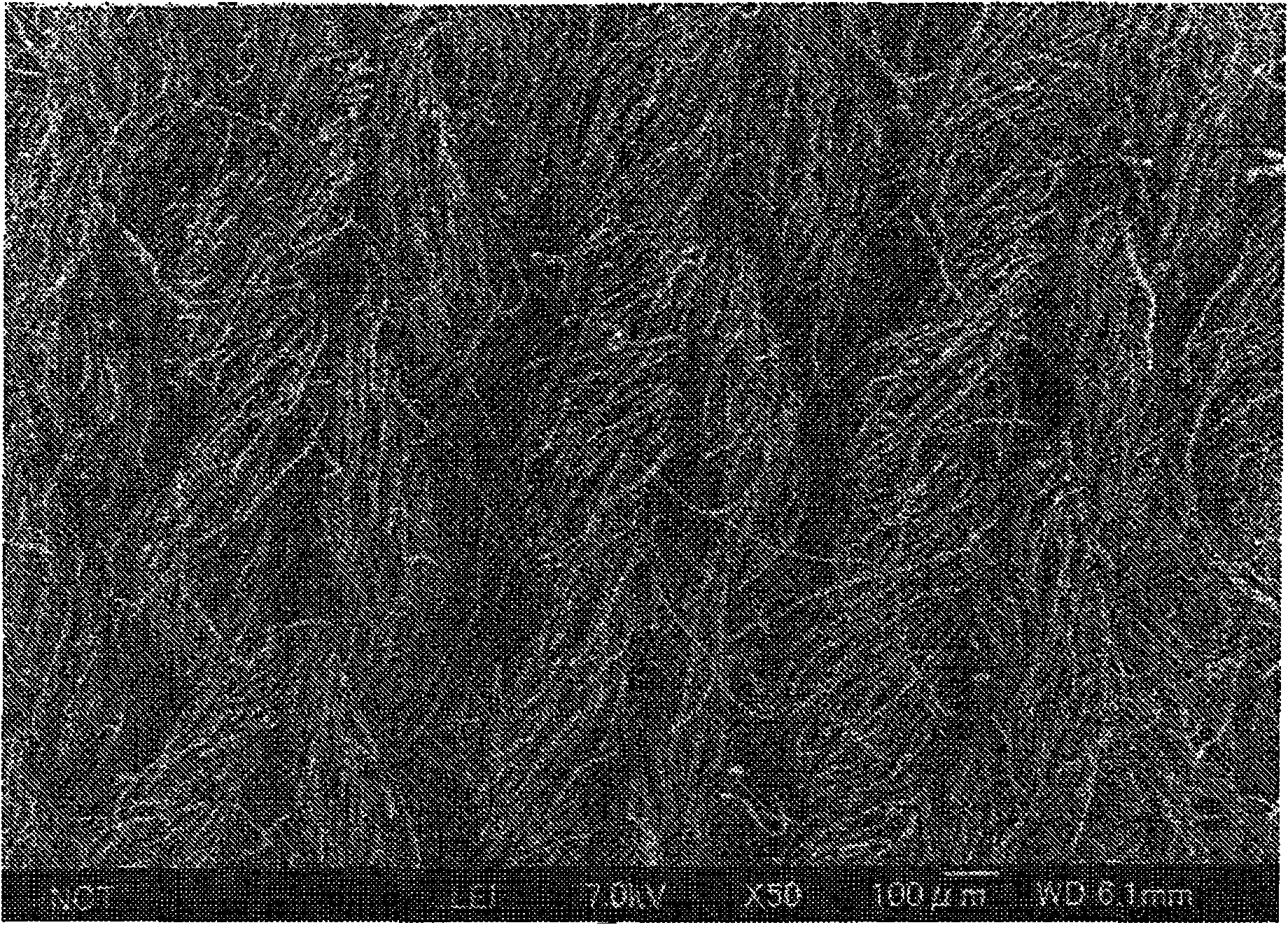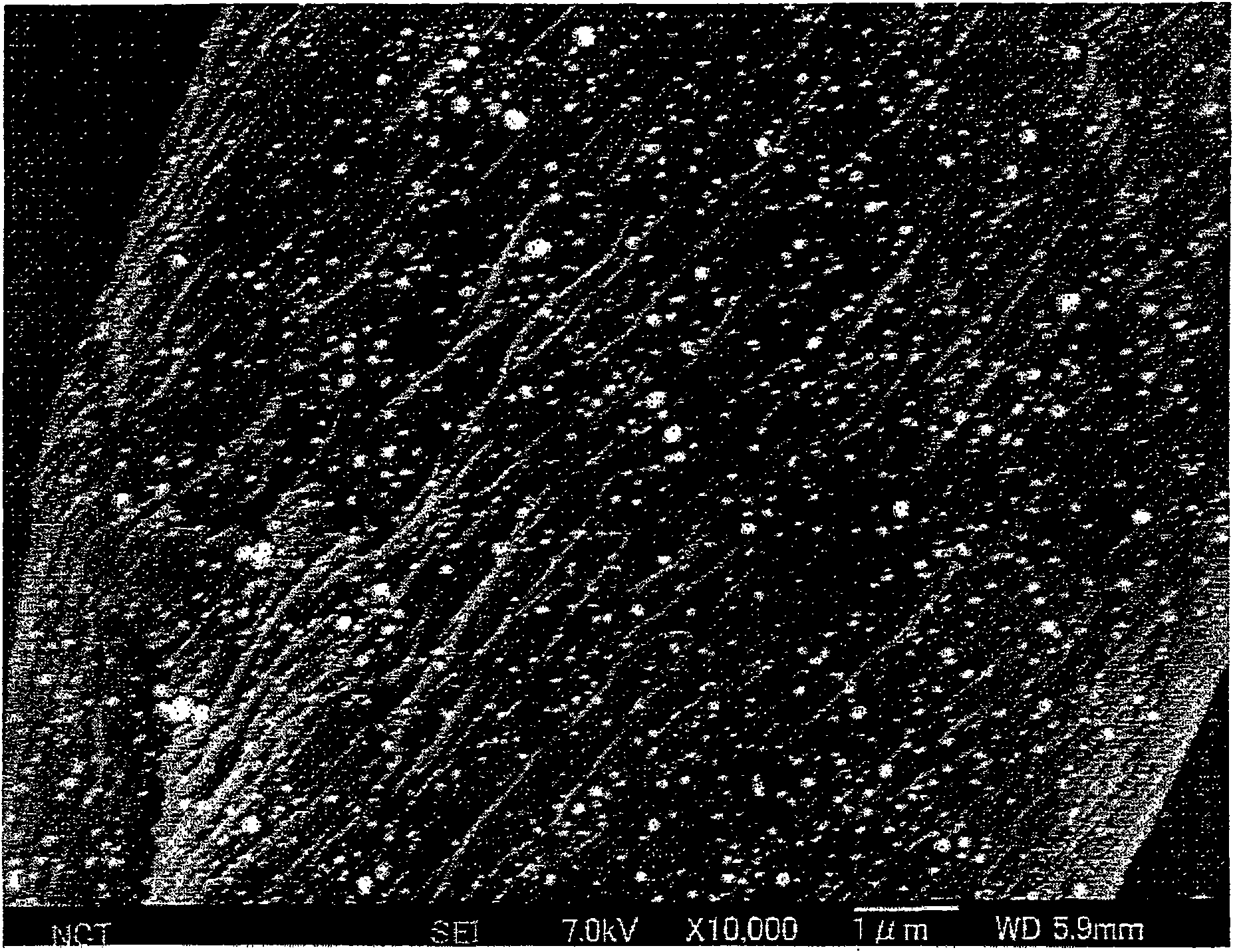Method for production of carbonized cloth, and carbonized cloth produced by the method
A manufacturing method and technology of carbonized cloth, applied in textile and papermaking, fiber chemical characteristics, woven fabrics, etc., can solve the problems of reduced electrical conductivity and thermal conductivity, high density, unsatisfactory fiber softness, etc. Achieves good chemical and wash resistance, improved mechanical strength and softness, excellent mechanical strength and softness
- Summary
- Abstract
- Description
- Claims
- Application Information
AI Technical Summary
Problems solved by technology
Method used
Image
Examples
Embodiment 1
[0098] A carbonized fiber cloth was produced under the following conditions.
[0099] As a raw material, a cotton knit fabric (double-knit, manufactured by Kimura Textile Co., Ltd.) with a width of 115 mm and a thickness of 6 mm was used. Furthermore, the stiffness and softness of the cotton knitwear measured by a cantilever stiffness testing machine are 28 mm in the wale direction and 17 mm in the course direction. 300 layers of this cotton knitted fabric were laminated with a predetermined length, placed in a heating furnace, and heated under the following heating conditions to manufacture a carbonized fiber cloth.
[0100] Heating conditions: room temperature (15℃±20℃)~900℃, heating rate 100℃ / hour
[0101] The sum of heating holding time: 15 hours
[0102] Cooling: natural cooling
[0103] In addition, in an oxidizing atmosphere with an oxygen partial pressure of about 150mmHg immediately after the start of heating, in the temperature range of about 270°C to 300°C, due t...
PUM
| Property | Measurement | Unit |
|---|---|---|
| Volume resistivity | aaaaa | aaaaa |
Abstract
Description
Claims
Application Information
 Login to View More
Login to View More - R&D
- Intellectual Property
- Life Sciences
- Materials
- Tech Scout
- Unparalleled Data Quality
- Higher Quality Content
- 60% Fewer Hallucinations
Browse by: Latest US Patents, China's latest patents, Technical Efficacy Thesaurus, Application Domain, Technology Topic, Popular Technical Reports.
© 2025 PatSnap. All rights reserved.Legal|Privacy policy|Modern Slavery Act Transparency Statement|Sitemap|About US| Contact US: help@patsnap.com



